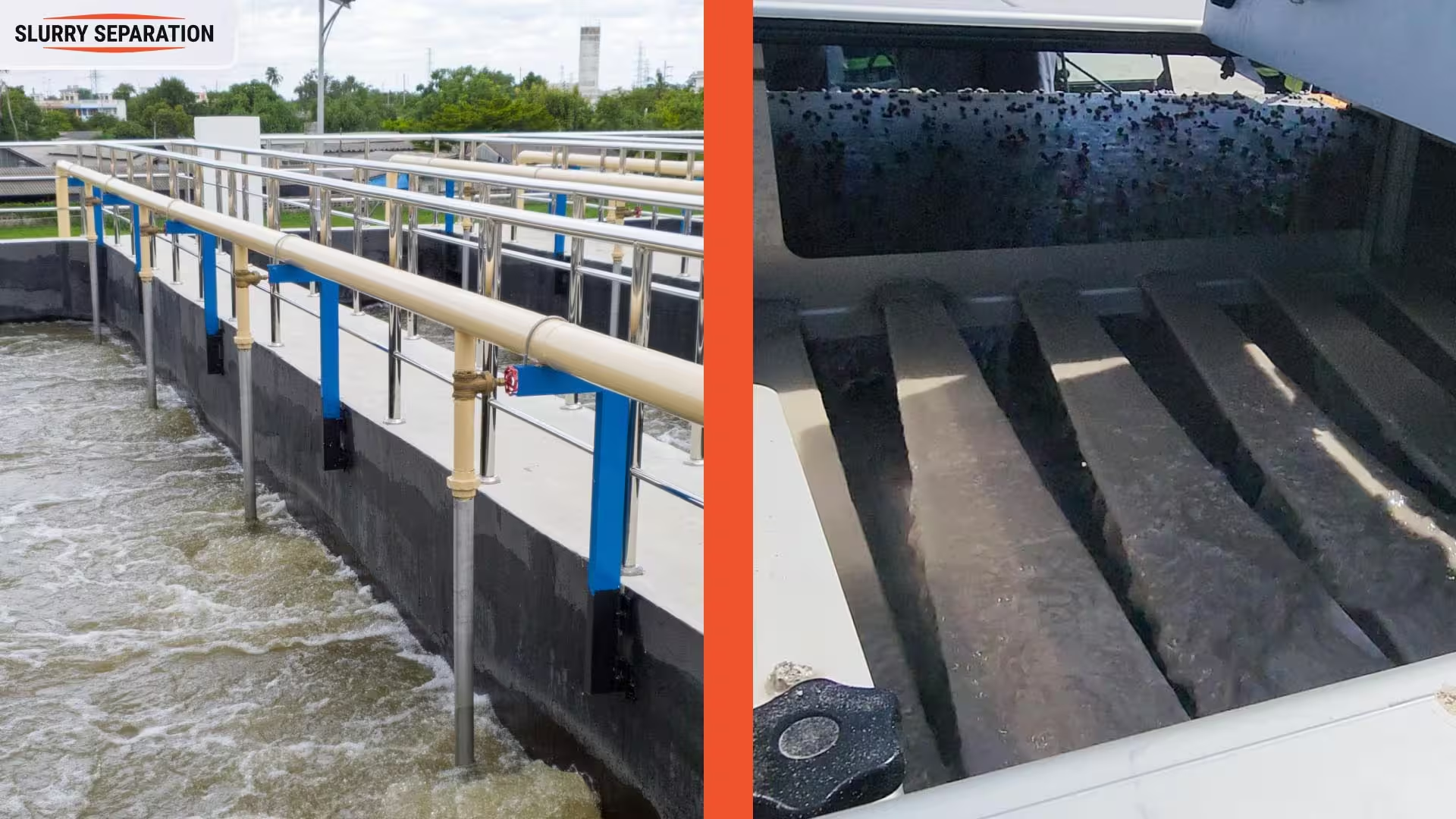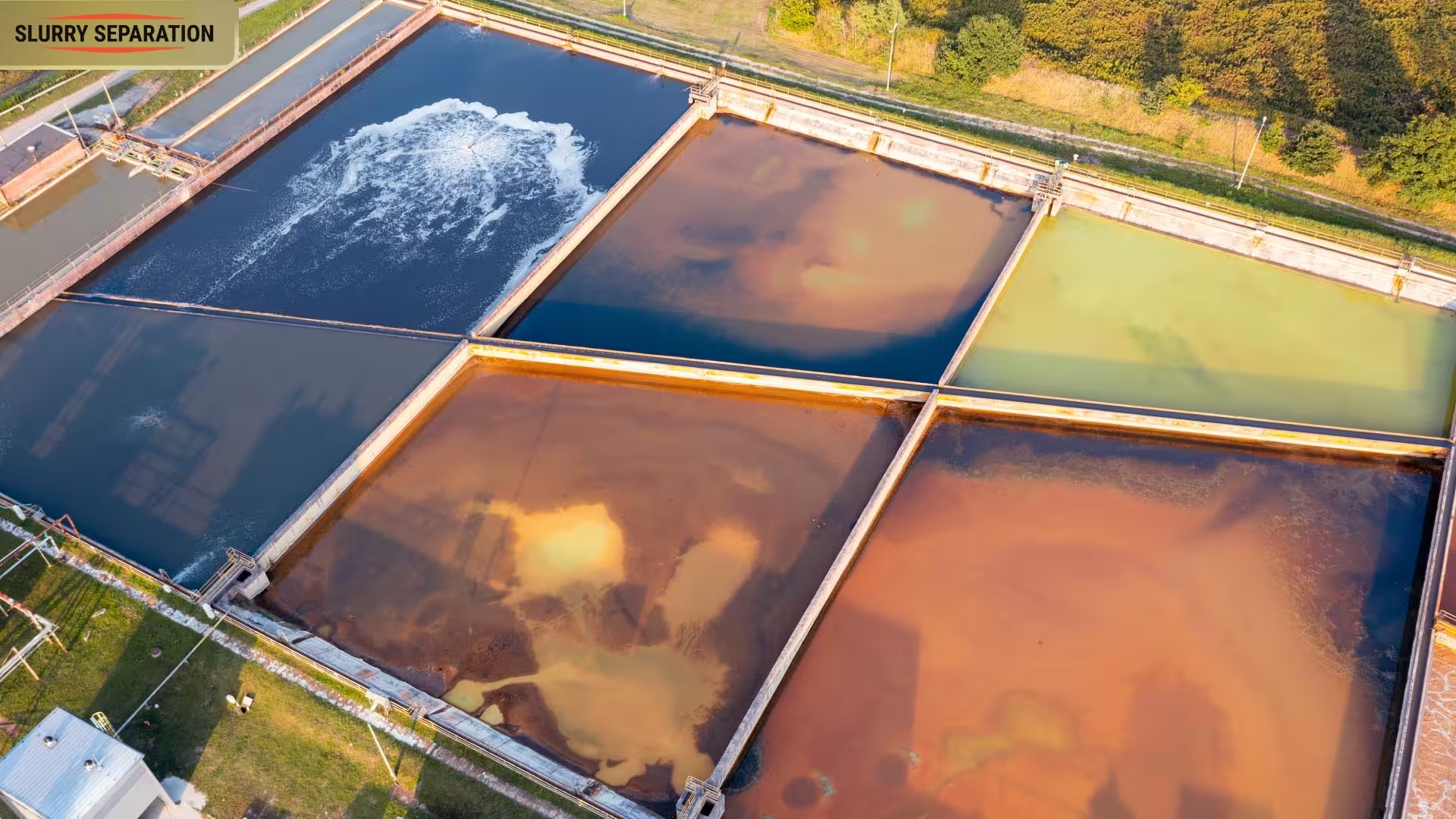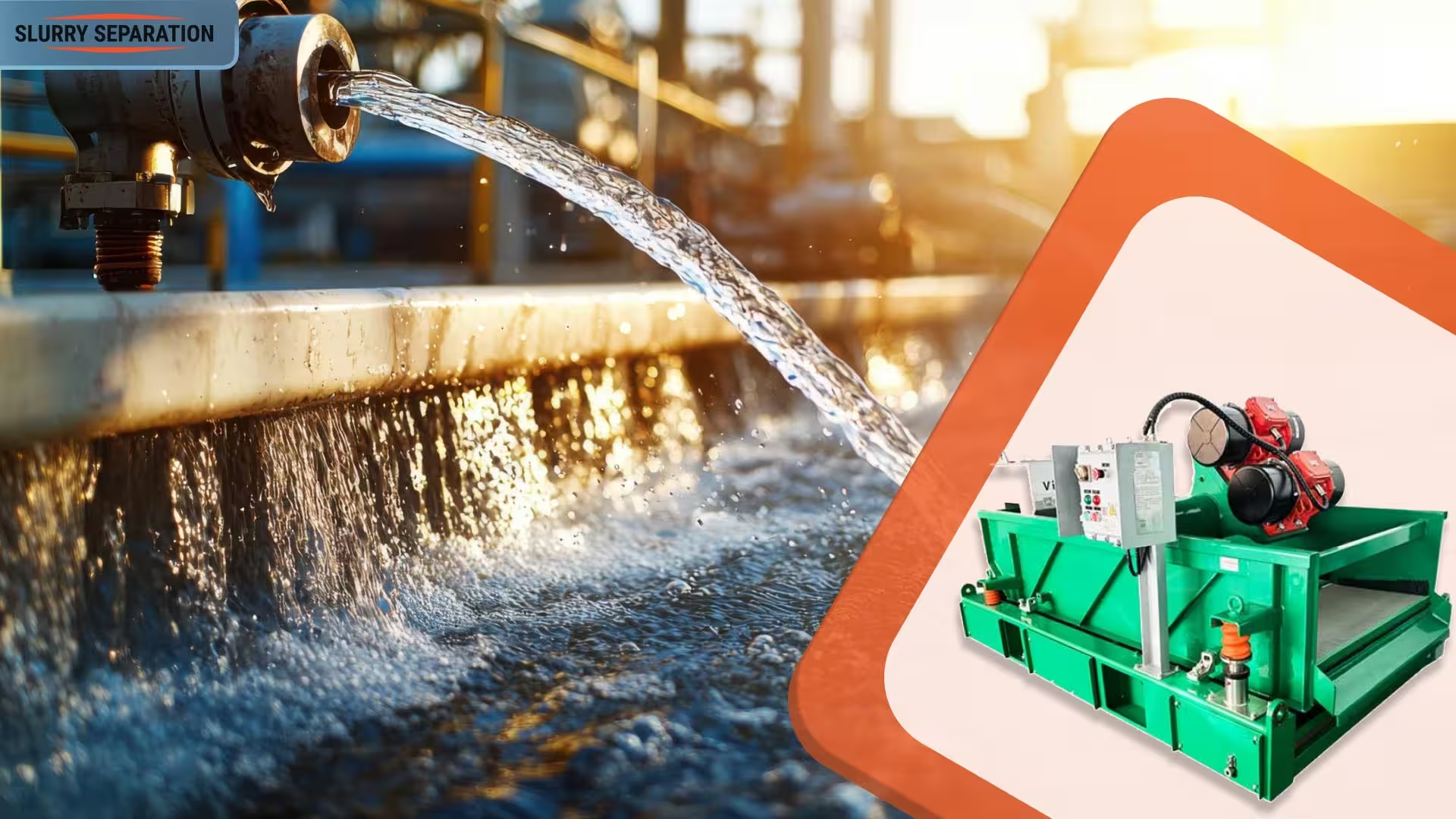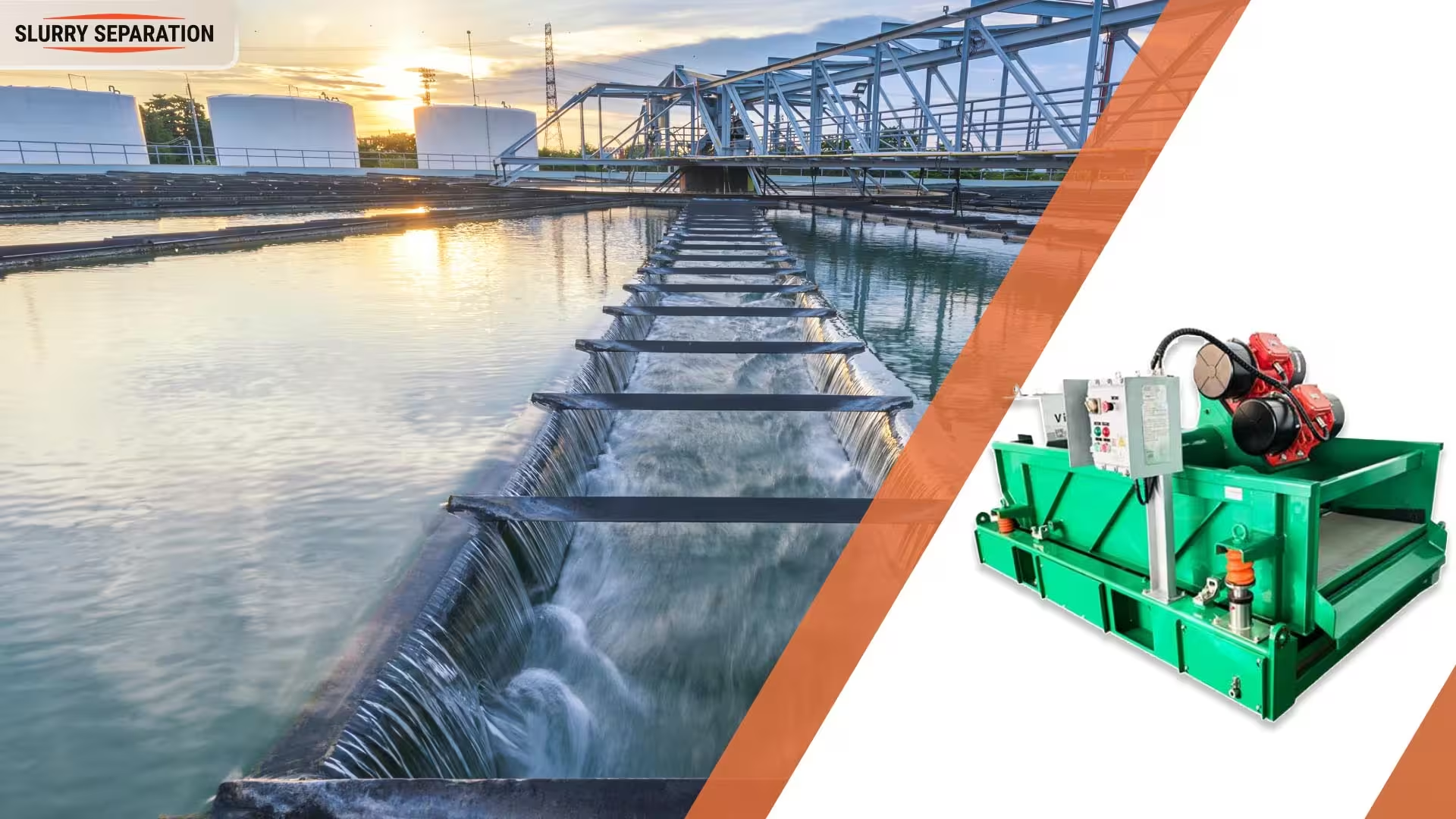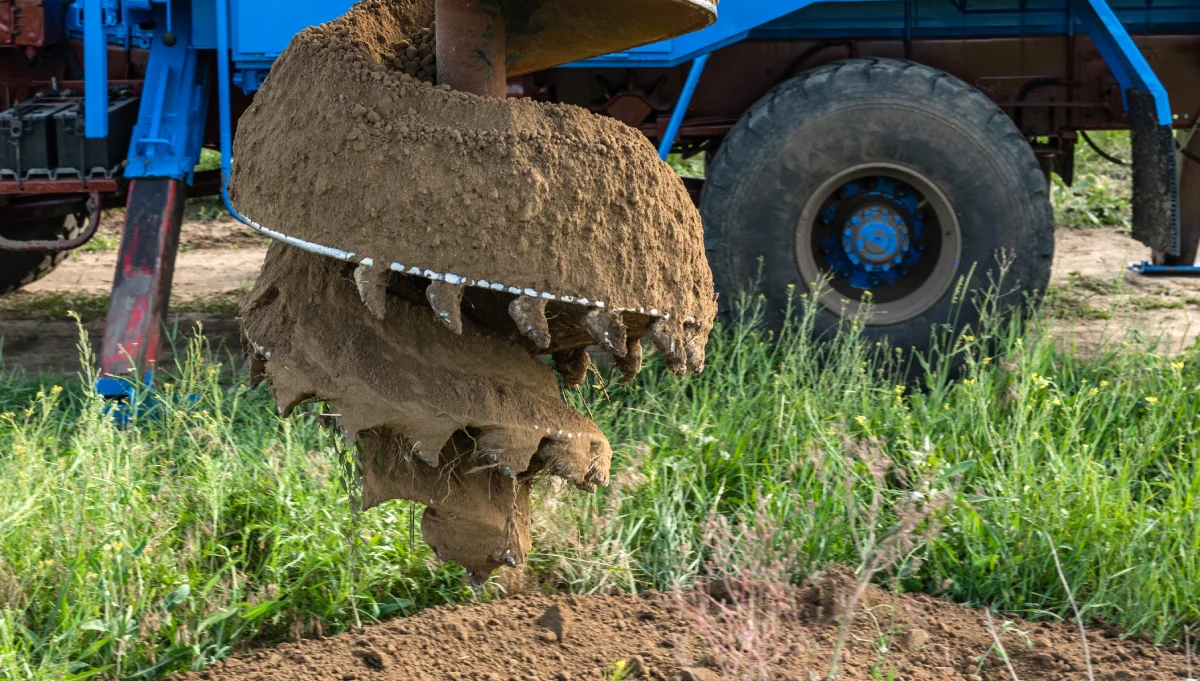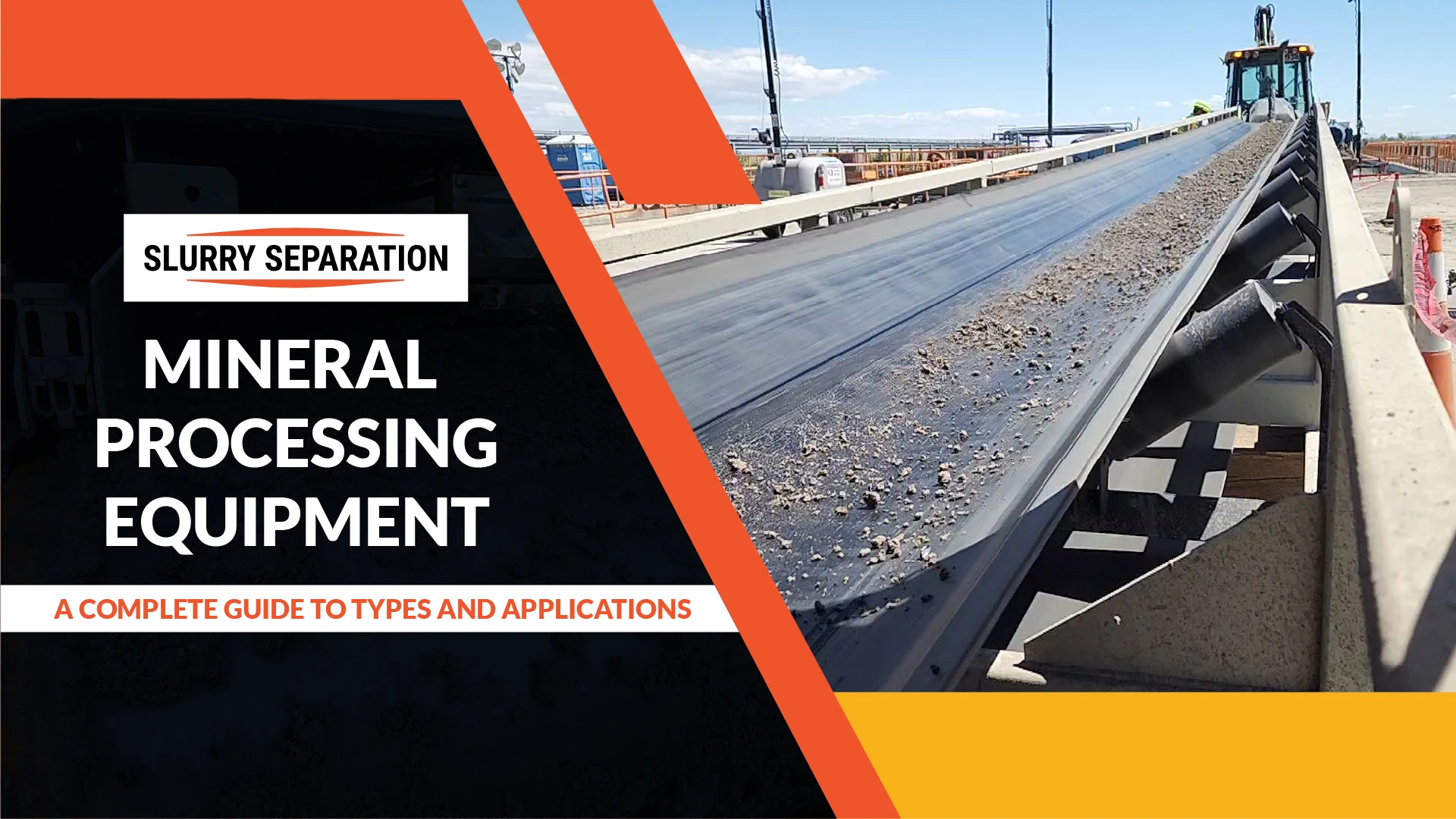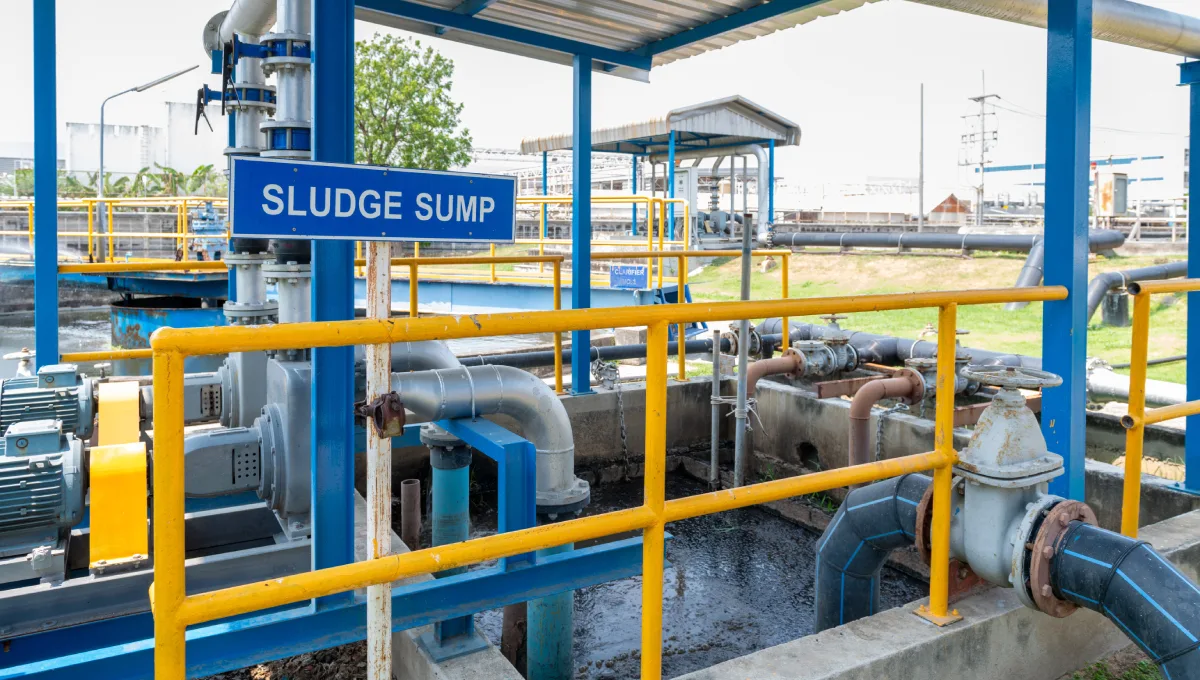Liquid-solid separation is a critical process in various industries, playing a significant role in ensuring efficient operations and maintaining product quality. Solid-liquid separation techniques have general application across processing industries, including food, chemical, and mining sectors. In the agriculture industry, separating manure solids from manure slurry is a critical practice for safe disposal. From wastewater treatment plants to food processing facilities and mining operations, the ability to effectively manage the separation of solid from liquid is essential for maintaining system efficiency, meeting regulatory standards, and reducing costs. This article explores the different solid-liquid separation techniques, highlighting the importance of choosing the right method and liquid-solid separation equipment for specific applications to achieve optimal results.
Overview of Liquid-Solid Separation
Definition: Liquid-solid separation involves removing solids from liquids, either to purify the liquid, recover valuable solids, or both. This separation of solid from liquid is essential in many industrial applications where the presence of solids in liquids can compromise product quality, cause equipment damage, or lead to operational inefficiencies. Various solid-liquid separation techniques are employed during early stages to achieve this, ensuring that the process is efficient and meets the specific needs of the industry.
Applications: Industries, where liquid-solid separation is crucial include wastewater treatment, where solids must be removed to meet environmental discharge regulations and to effectively remove solids for compliance with environmental standards; food and beverage production, where the purity of liquids is vital for safety and quality; and mining, where separating valuable minerals from the slurry is a key step in the extraction process.
Challenges: Common challenges in liquid-solid separation include handling different sizes of particles and solids, dealing with varying concentrations of solids, and maintaining separation efficiency over time. Particle size measurement is important in many operations to optimize the effectiveness of separation processes. These challenges make it essential to select the most appropriate solid-liquid separation techniques for each application, considering the specific liquid-solid separation equipment available.
Filtration
Description:
Filtration is one of the most widely used methods of liquid-solid separation. It involves passing a liquid-solid mixture through a filter medium that allows the liquid to pass while retaining the solid particles. In many rapid filtration processes, a filter bed acts as a porous medium, allowing the fluid to pass through while retaining solids. The filter bed’s porosity and permeability play a key role in mechanisms such as interception, sedimentation, and chemical reactions during particle removal.
Types of Filtration:
- Surface Filtration: This method involves trapping particles on the surface of the filter medium. It is commonly used in applications where the particles are large enough to be easily captured, such as in water treatment and food processing. The benefits include simplicity and ease of maintenance, but surface filtration can be less effective for very fine particles.
- Depth Filtration: In depth filtration, the liquid passes through a thick layer of porous material, trapping particles within the medium. This method is advantageous for handling high solid loads and fine particles, making it ideal for applications like pharmaceutical manufacturing. However, depth filters can be more expensive and require more frequent replacement.
- Crossflow Filtration: Crossflow filtration involves passing the liquid across the filter surface, allowing solids to be concentrated and removed continuously. This method is commonly used in the food and beverage industry for processes like wine and juice clarification. The main advantage is that it can handle high solids concentrations without clogging, though it can be more complex to operate.
Advantages and Disadvantages: Filtration offers high efficiency and the ability to handle a range of particle sizes. However, it can require significant maintenance and replacement of filter media, especially in applications with high solid loads. The physical properties of the fluid, such as density and viscosity, can significantly impact filtration efficiency. The choice of liquid-solid separation equipment is crucial for achieving optimal filtration performance and ensuring effective separation of solid from liquid.
Sedimentation
Description: Sedimentation relies on gravity to separate solids from liquids. Sedimentation is often used to separate solids from a solution, allowing for the recovery of clarified liquid. As the mixture settles, the heavier solids sink to the bottom, allowing the clarified liquid to be removed from the top.
Applications: Sedimentation is commonly used in water treatment plants, where large tanks called clarifiers allow solids to settle out of the water before it is discharged or further treated.
Types of Sedimentation:
- Clarifiers: Clarifiers are large, open tanks where sedimentation occurs. They are widely used in municipal water treatment and industrial wastewater treatment to remove suspended solids.
- Thickeners: Thickeners are used to concentrate sludge or slurry by allowing the solids to settle and the liquid to be removed. This is particularly important in mining and mineral processing, where large volumes of slurry must be handled.
Advantages and Disadvantages: Sedimentation is a simple and cost-effective method for the separation of solid from liquid. However, it can be slow and may require large amounts of space for the settling tanks, depending on the specific liquid-solid separation equipment used.
Centrifugation
Description: Centrifugation uses centrifugal force to separate solids from liquids. The mixture is spun at high speeds, causing the heavier solids to move outward while the lighter liquid remains in the center.
Types of Centrifuges:
- Decanter Centrifuge: Decanter centrifuges are commonly used in industries like oil and gas and wastewater treatment to continuously separate solids from liquids. They are highly efficient but can be expensive to operate.
- Disk Stack Centrifuge: Disk stack centrifuges are used in applications requiring high-speed separation, such as in the pharmaceutical and food industries. They offer high efficiency and can handle fine particles, but they are also costly and complex to maintain.
- Pusher Centrifuge: Pusher centrifuges are designed for continuous solid-liquid separation, mechanically separating solids from liquids. They are often used when handling large volumes of solids, but issues such as particle breakage and shape irregularities can occur during operation.
Advantages and Disadvantages:Centrifugation offers the advantage of rapid and efficient solid-liquid separation techniques, especially for fine particles. However, it is energy-intensive and may require significant investment in liquid-solid separation equipment.
Flotation
Description:
Flotation is a separation technique based on the differences in the ability of air bubbles to adhere to particles selectively. The particles attach to the bubbles and float to the surface, where they can be removed.
Types of Flotation:
- Dissolved Air Flotation (DAF): In DAF, air is dissolved in water under pressure and then released at atmospheric pressure in a flotation tank. The released air forms bubbles that attach to the solids, causing them to float. DAF is commonly used in wastewater treatment and food processing.
- Induced Air Flotation (IAF): IAF is similar to DAF but uses mechanical means to introduce air into the liquid. It is often used in the oil & gas industry to separate oil from water.
Advantages and Disadvantages:
Flotation is effective for treating fine particles and is widely used in industries like mining and wastewater treatment. However, it can be complex to operate and maintain, requiring specialized liquid-solid separation equipment.
Membrane Separation
Description:
Membrane separation uses a permeable membrane to separate solids from liquids based on particle size.
Types of Membrane Processes:
- Microfiltration (MF): Microfiltration involves filtering particles down to 0.1 microns. It is commonly used in water purification and dairy processing.
- Ultrafiltration (UF): Ultrafiltration removes smaller particles and is often used in pharmaceutical manufacturing.
- Nanofiltration (NF) and Reverse Osmosis (RO): NF and RO are used for desalination and removing dissolved salts and other impurities from water.
Applications:Membrane separation is widely used in water treatment, food and beverage production, and pharmaceuticals.
Advantages and Disadvantages:Membrane separation offers high efficiency and purity, but it can be expensive and requires regular maintenance. The performance of membrane separation is highly dependent on operating conditions such as pressure, temperature, and feed composition. Thus, it is a critical consideration in choosing the right solid-liquid separation techniques and ensuring the proper operation of liquid-solid separation equipment.
Mechanical Separation
Description:
Mechanical separation methods, such as sieving, screening, and pressing, physically separate solids from liquids based on particle size and shape.
Applications:
Mechanical separation is used in agriculture, food processing, and bulk material handling.
Types of Mechanical Separation:
- Vibratory Screens: These are used to separate different particle sizes in various industries.
- Pressing (Belt Press, Screw Press): Pressing is used in dewatering and sludge management.
Advantages and Disadvantages:
Mechanical separation is cost-effective but may only be suitable for some fine particles. The effectiveness of mechanical liquid-solid separation equipment often depends on the specific application and material characteristics. Mechanical separation equipment can be designed to handle a wide range of materials, including fibrous and crystalline solids.
Chemical Separation
Description:
Chemical methods involve adding chemicals to the liquid-solid mixture to cause particles to coagulate, flocculate, or precipitate out of the liquid.
Applications:
Chemical separation is commonly used in water treatment, mining, and industrial wastewater treatment.
Advantages and Disadvantages:
Chemical separation is highly effective but can have environmental impacts and higher operational costs. Selecting the right liquid-solid separation equipment is essential to minimize these impacts and ensure efficient operations.
Liquid Solid Separation Equipment
Selecting the right liquid solid separation equipment is fundamental to achieving efficient and reliable separation in industrial applications. The choice of equipment depends on several factors, including the nature of the solid-liquid mixture, particle size, and the required separation efficiency. Common types of liquid solid separation equipment include gravity settlers, sedimenting centrifuges, hydrocyclones, classifiers, gravity filters, line filters, pressure filters, and vacuum filters. Gravity settlers and gravity filters are often used for large-scale operations where the separation of larger solid particles from liquids is required, making them ideal for applications such as water treatment and mining.
For finer particles or when higher separation efficiency is needed, sedimenting centrifuges and hydrocyclones are preferred, as they use centrifugal force to enhance the separation process. In industrial applications where solids concentration is high, filter presses, belt presses, and screw presses are widely used to dewater sludge and separate solids from liquids efficiently. Each type of equipment is designed to handle specific particle sizes and concentrations, ensuring that the separation process is both effective and economical.
Regular maintenance of liquid solid separation equipment is essential to maintain optimal performance, prevent unexpected downtime, and extend the lifespan of the equipment. By carefully selecting and maintaining the appropriate equipment, industries can achieve consistent liquid separation, improve process efficiency, and reduce operational costs.
Particle Size and Separation
Particle size is a key factor influencing the effectiveness of solid-liquid separation processes. Larger particles are generally easier to separate from liquids, as they settle more quickly and are more readily captured by filters or gravity-based methods. In contrast, smaller particles present a greater challenge, often requiring advanced techniques and specialized equipment to achieve effective separation.
The distribution of particle sizes within a mixture determines which separation method will be most efficient. Sedimentation and centrifugation are particularly effective for removing larger particles, as these methods rely on differences in density and the ability of particles to settle or be forced out of suspension. For smaller particles, filtration becomes more important, with filters and filter media designed to capture fine solids that would otherwise remain suspended in the liquid.
Additionally, the shape and surface characteristics of particles can impact how easily they are removed. Irregularly shaped or very fine particles may pass through standard filters, necessitating the use of finer filter media or alternative techniques. Understanding the particle size distribution and characteristics of the solid-liquid mixture is crucial for selecting the most suitable separation method and equipment, ensuring efficient removal of solids and minimizing the risk of equipment clogging or damage.
Solid Liquid Interaction
The interaction between solid particles and the surrounding liquid plays a pivotal role in determining the efficiency of solid-liquid separation processes. Factors such as particle size, shape, and surface properties can significantly influence how particles behave in a liquid medium. For example, solid particles with a high surface charge may remain suspended longer, making them more difficult to separate using conventional methods.
The presence of dissolved salts and other chemicals in the liquid can further affect these interactions, altering the way particles aggregate or disperse. In some cases, chemicals may be added intentionally to modify the surface properties of particles, enhancing their removal through processes like coagulation or flocculation. However, these additives can also introduce environmental impacts that must be carefully managed in industrial applications.
A thorough understanding of solid-liquid interaction is essential for optimizing separation efficiency and selecting the most effective techniques and equipment. By considering how solid particles interact with the liquid and the influence of various factors—such as surface properties, chemical composition, and medium characteristics—operators can design processes that achieve high separation efficiency, reduce costs, and minimize negative environmental impacts. This holistic approach ensures that solid-liquid separation systems are both effective and sustainable across a wide range of industrial processes.
Comparison of Methods
Factors to Consider:
When selecting a liquid-solid separation method, factors such as particle size, concentration, and specific industry requirements should be considered. Established practical methods are often preferred for their proven reliability and widespread industrial use. Each technique has unique strengths that may better suit particular applications.
Efficiency vs. Cost: Each method has its trade-offs between efficiency, operational complexity, and cost. Selecting the right method and liquid-solid separation equipment can lead to significant operational savings and improved process efficiency.
Conclusion
Liquid-solid separation is vital across industries, ensuring efficiency, product quality, and regulatory compliance. Understanding the different methods—such as filtration, sedimentation, centrifugation, flotation, membrane separation, mechanical, chemical separation, and slurry separation allows for informed decision-making tailored to specific needs. Each of these solid-liquid separation techniques plays a crucial role in the effective separation of solid from liquid. These techniques have unique benefits and challenges, from the simplicity of sedimentation to the precision of membrane processes. By selecting the right technique and liquid-solid separation equipment, industries can enhance efficiency, reduce costs, and minimize environmental impact, ultimately achieving more sustainable and competitive operations. Staying updated on advancements in these technologies, including slurry separation, is key to maintaining a strong industrial edge.



